The cross between the Old English Sheepdog and Poodle is well-known for its beautiful, fluffy coat. If you’ve been pondering about adopting a Sheepadoodle, you’re probably wondering – do Sheepadoodles shed? And are Sheepadoodles hypoallergenic?
In this guide, we’re going to learn all about Sheepadoodle shedding levels, what causes it, how to manage excessive shedding, and also discuss the Sheepadoodle hypoallergenic potential. Let’s get started!
Table of Contents
- Do Sheepadoodles Shed? Are Sheepadoodles Hypoallergenic?
- Pet Allergies: What Are They And What Causes Them?
- The Great “Sheepadoodles Are Hypoallergenic” Debate
- Why Do Sheepadoodles Shed?
- How Much Do Sheepadoodles Shed?
- Sheepadoodle Shedding: Comparing Sheepadoodle Hypoallergenic Levels Across Generations
- How To Reduce Sheepadoodle Shedding & Manage Your Allergic Reactions
- Do Sheepadoodles Shed & Are They Hypoallergenic? FAQs
Do Sheepadoodles Shed? Are Sheepadoodles Hypoallergenic?
As you may know, Sheepadoodles greatly benefit from the Poodle genes in their heritage. After all, Doodles were initially bred to create a hypoallergenic pup with the best qualities from both purebred parents. From the Poodle’s side of the lineage, Doodles inherit a low to non-shedding coat, whereas they still exhibit many great qualities from the other purebred parent.
However, there’s a huge misconception that Doodles don’t shed at all. Some Doodles shed very little or none at all, while others experience some degree of shedding. How much a Sheepadoodle sheds depends greatly on their genetic makeup and coat type. The same goes for the Sheepadoodle’s hypoallergenic potential.
Nevertheless, Sheepadoodles do shed considerably less than their purebred Old English Sheepdog parents. Because of this, Sheepadoodles have quickly become popular, as they’re allergy-friendly and don’t leave your house looking like a mess.
Pet Allergies: What Are They And What Causes Them?
With somewhere between 15 and 30 percent of the population suffering from pet allergies, they really are a big deal. Thankfully cat allergies are, by far, the bigger problem, being about twice as common as dog allergies and much more severe. However, dog allergies can be problematic, too, especially if you adore dogs and would love nothing better than to adopt one.
Pet hair or fur is widely considered the biggest trigger for these allergies in people. However, this isn’t actually the case – or at least it’s only half the story. It is, in fact, proteins in dogs’ skin (dander) and saliva that causes the symptoms we refer to as allergies. Hair and fur shedding are just the way these are spread all about the place – the proteins’ best method of transportation.
What is actually happening is your immune system is reacting abnormally to these harmless proteins, acting as though they are a threat to your body. Your airways become inflamed, which brings on various symptoms – everything from nasal congestion to runny eyes and sneezing. If you have asthma, you’ll likely suffer the double whammy of difficulty breathing, chest tightness or pain, and trouble sleeping on top of all that. Not good.
The light at the end of the tunnel comes from the whispered rumor that dogs who shed less, or create less dander anyhow, might not be as much of a problem for people who do have allergies. The Poodle is known to be one of these dogs and, by extension, the Doodle too. Yet there is a little bit more to the story than that…
The Great “Sheepadoodles Are Hypoallergenic” Debate
Hypoallergenic, which refers to something less likely to cause an allergic reaction, is frequently used by breeders to describe their gorgeous Doodle puppies. However, it has been hotly contested whether this is indeed the case at all – which is why we are here now…
According to experts over at the American Kennel Club (AKC), there is no such thing as a completely hypoallergenic dog. However, they do go on to admit that some breeds are less likely to trigger an allergic response than others (namely those that shed less and produce less dander). With that in mind, the AKC lists 19 breeds as best for those with allergies. While the Poodle is numbered among them, the Old English Sheepdog, the other part of the Sheepadoodle equation, very definitely is not.
This is because the Old English Sheepdog’s glorious shaggy coat is not just long and luscious; it is also double-layered. What this means is that these dogs are shedders – and how! Beyond that, these dogs are also super droolers, which all adds up to plenty of those pesky proteins about the place. So is all hope lost for the allergy sufferer longing to adopt one of these beautiful pups? Perhaps not…
Why Do Sheepadoodles Shed?
So, why do Sheepadoodles shed? There are various reasons for Sheepadoodle shedding, but the most important factors are their coat type and genetic makeup. Here’s what we mean exactly…
Coat Type
Like other Doodles, Sheepadoodles come in different coat types. This is due to the fact that we combine two different purebred dogs. Naturally, this will affect how the puppies will turn out. Their coat type can vary from straight, to wavy, to curly.
Some Sheepadoodles sport a coat that combines both the Old English Sheepdog and Poodle qualities. However, some pups can also lean more on the Poodle side or the Old English Sheepdog side.
Curly coat, a.k.a. wool coat Sheepadoodles have inherited their coat type mostly from the Poodle’s side of the lineage. As Poodles are single-coated, Sheepadoodles with curly coats tend to shed very minimally, making them the best choice for people who are looking for a low-shedding Sheepadoodle. On the flip side of the coin, the Sheepadoodle curly coat is typically the hardest to maintain, as it is most prone to matting and requires lots of maintenance on a daily basis.

Then there’s the wavy coat, a.k.a. fleece coat, which combines the Poodle curls and shaggy Old English Sheepdog locks. Sheepadoodles with wavy coats may come with undercoats, which means that there might be some shedding. On the other hand, wavy coats are rather easy to maintain, as they don’t shed much and they aren’t as prone to matting.
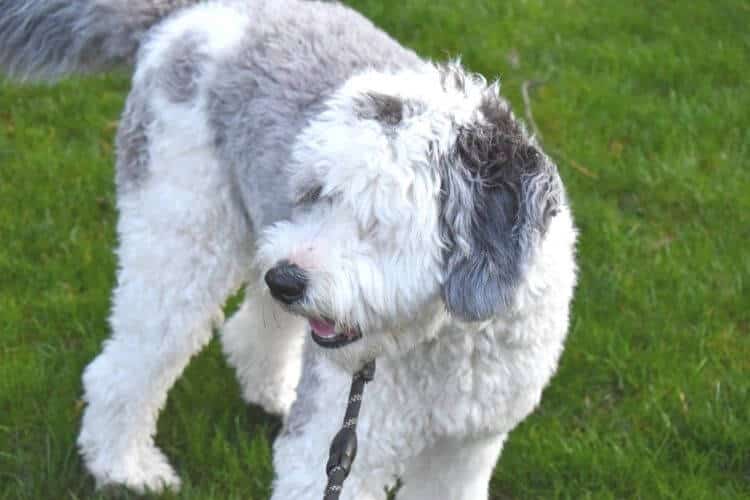
Finally, inspired by the Old English Sheepdog, we have the straight coat Sheepadoodle. Out of all the Sheepadoodle coat types, straight coats shed the most, as they’re generally double-coated. Although straight coat Sheepadoodles shed more than the other two coat types, there’s still considerably less shedding than in Old English Sheepdogs.
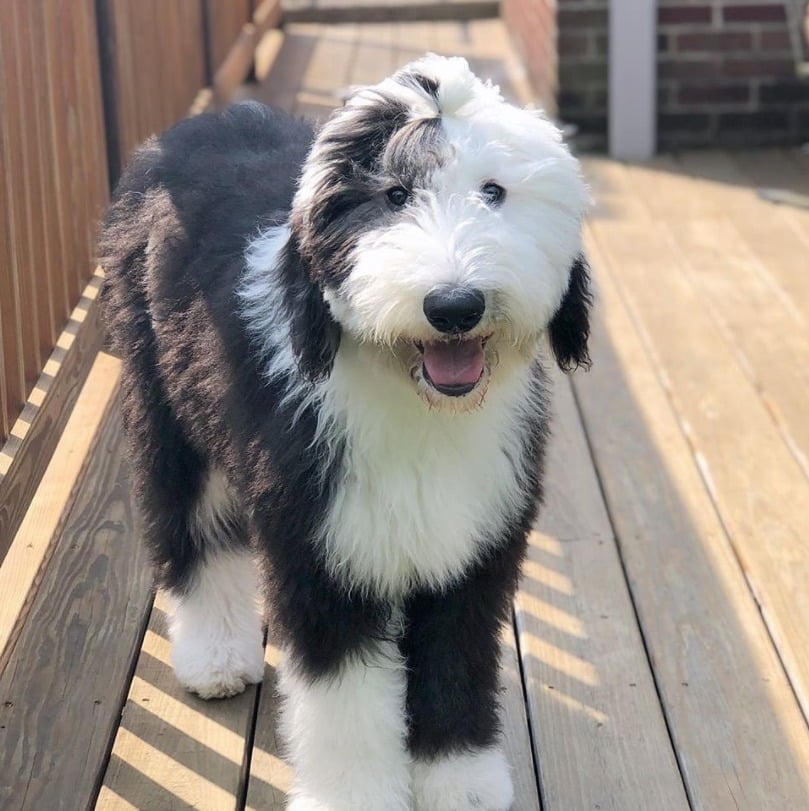
Image by DoggieFetch.com, licensed under CC BY 2.0.
Genetics & Generation
So, what determines the Sheepadoodle’s coat type? Their genetics, of course! Whether a Sheepadoodle inherits an almost non-shedding curly coat or a more shedding Sheepdog coat, depends on how much of their genetic makeup consists of either of the parent breeds. And that’s where Sheepadoodle generations come in.
For instance, if a Sheepadoodle’s genetic makeup has a higher percentage of Poodle, it’s more likely they’ll inherit a more low-shedding coat. Likewise, if their genetic makeup leans more on the Old English Sheepdog side, it’s more likely they’ll inherit a coat that sheds more than their curly-haired counterparts.
A bit later on we’ll cover all the Sheepadoodle generations and discuss which Sheepadoodle sheds the least and which Sheepadoodles generations might not be as allergy-friendly as some others.
Other Causes of Sheepadoodle Shedding
Although the main causes of Sheepadoodle shedding are down to their genetics and coat type, there are various other reasons why your Dood might be shedding hair.
Diet
One of the most common causes of excessive shedding in Sheepadoodles is caused by improper diet. If your pup doesn’t get all the essential micro and macronutrients from its diet, it can lead to excessive hair loss and hair breakage.
In addition to that, switching your Dood’s dog food can also cause issues in their digestive system, coat, and skin health. If you do have to change your pup’s formula, make sure you do it gradually over time to not cause any digestive distress or issues with shedding.
Allergies, Skin Sensitivities, & Other Health Issues
Another extremely common cause of excessive shedding in Sheepadoodles is caused by food allergies, skin allergies, and sensitivities. Allergies and sensitivities are not uncommon in Doodles, so make sure your pup is eating a diet that contains protein sources and other ingredients that don’t trigger allergic reactions. Similarly, skin allergies, rashes, and skin dryness can oftentimes also cause excessive hair loss and shedding.
Additionally, there are various other medical concerns that can cause your Sheepadoodle to shed. If you notice other worrying symptoms like changes in their behavior or appetite, we urge you to immediately contact your veterinarian.
Fleas, Ticks, & Parasites
Fleas, ticks, and parasites can all cause similar symptoms similar to skin allergies. If your pup has caught any of those bugs, it will certainly cause them great discomfort, such as itching and excessive scratching. This in turn can lead to infections, open sores, excessive shedding, hair loss, or even bald patches.
Anxiety & Stress
Lastly, anxiety and stress can also lead to excessive shedding in Sheepadoodles. You might notice that your pup is licking or scratching itself more often than usual. As a result, their hair may start to fall out from those spots.
Just like humans, Doodles can experience anxiety for a variety of reasons. Most commonly, these include separation anxiety, not getting enough mental or physical stimulation, boredom, not getting enough affection and attention from their owners, changes in routine, changes in the family, or moving.
How Much Do Sheepadoodles Shed?
Again, to answer this question, we must first understand which coat type your pup has. As a general rule of thumb, curly coat Sheepadoodles are often considered hypoallergenic dogs, as they tend to shed extremely little. On the other hand, wavy coat Sheepadoodles might shed a little bit of hair, while straight coat Sheepadoodles with double coats might shed noticeably more compared to the other two coat types.
All in all, all Sheepadoodles are considered very low to non-shedders thanks to the Poodle genes in their lineage. Even straight coat Sheepadoodles with undercoats shed considerably less than their Old English Sheepdog parents.
However, if your Sheepadoodle’s shedding is caused by their diet, allergies, or other health conditions, it’s likely that they’re shedding an excessive amount of hair. If that’s the case, you should consult with your vet as soon as possible to get to the root of the issue.
Sheepadoodle Shedding: Comparing Sheepadoodle Hypoallergenic Levels Across Generations
Understanding a Sheepadoodle’s genetic makeup gives us a pretty good estimate about their potential for shedding. As the Sheepadoodle is a hybrid breed, they’re categorized in different generations, which tell us exactly how much of their genetic makeup consists of either of the parental breeds.
So, do first generation Sheepadoodles shed? Are F1 Sheepadoodles hypoallergenic? What about Minis? Which Sheepadoodle sheds the least? Let’s quickly go over all the possible Sheepadoodle generations and discuss how it can affect their coat type and shedding.
| 1st Parent | 2nd Parent | % Old English Sheepdog* | % Poodle* | |
| F1 Sheepadoodle (first-generation) | Old English Sheepdog | Poodle | 50% | 50% |
| F1B Sheepadoodle (first-generation backcross) | F1 Sheepadoodle | Poodle | 25% | 75% |
| F1BB Sheepadoodle (first-generation backcross backcross) | F1B Sheepadoodle | Poodle | 12.5% | 87.5% |
| F2 Sheepadoodle (second-generation) | F1 Sheepadoodle | F1 Sheepadoodle | 50% | 50% |
| F2B Sheepadoodle (second-generation backcross) | F1 Sheepadoodle | F1B Sheepadoodle | 37.5% | 62.5% |
| F2B Sheepadoodle (alternate cross) | F2 Sheepadoodle | Poodle | 25% | 75% |
| F3 / Multigen Sheepadoodle | F1B Sheepadoodle or higher | F1B Sheepadoodle or higher | Varies | Varies |

Do F1 Sheepadoodles Shed And Are They Hypoallergenic?
F1 Sheepadoodles or first-generation Sheepadoodles are 50% Poodle and 50% Old English Sheepdog. Because of this, it’s difficult to predict whether or not a first-generation Sheepadoodle will shed. Indeed, as they are a 50-50 mix of both parental breeds, there is a higher chance of F1 Sheepadoodles shedding compared to some other generations.
On the other hand, this doesn’t necessarily mean that all F1 Sheepadoodles shed. Their coats are usually more wavy than curly, but some might also inherit the straight coat. Depending on their coat type, they may or may not have an undercoat. If you’re after a non-shedding and hypoallergenic Sheepadoodle then the F1 might not be your best bet.
Are F1b Sheepadoodles Hypoallergenic?
To achieve an F1b Sheepadoodle, we first have to cross an F1 Sheepadoodle back to a Poodle. As we learned above, this results in an F1b Sheepadoodle that has a genetic makeup of 75% Poodle and 25% Old English Sheepdog.
As you might guess, F1b Sheepadoodles are a better choice for people with dog dander allergy. Or, if you’re just after a Sheepadoodle that sheds minimally. These pups typically have curly hair, which makes the F1b one of the least shedding and more hypoallergenic Sheepadoodles. However, there’s still a chance that some F1b Sheepadoodles carry the shedding-gene, but it’s much less likely to happen.
Interestingly, in rare cases, some breeders backcross F1 Sheepadoodles to Old English Sheepdogs. These so-called reverse F1b Sheepadoodles are 75% Old English Sheepdog and 25% Poodle, making them the least favorable option for people who are looking for a non-shedding Dood.
Do F1bb Sheepadoodles Shed?
F1bb Sheepadoodles, also known as first-generation backcross-backcross Sheepadoodles have an even smaller chance of shedding. Their genetic makeup consists of 87.5% Poodle and 12.5% Old English Sheepdog.
This Sheepadoodle generation almost always has a curly coat and they’re the least likely to shed compared to F1 and F1b Sheepadoodles. Naturally, F1bb Sheepadoodles are the safest choice for people who’d prefer a non-shedding Dood.
Do F2 Sheepadoodles Shed?
F2 Sheepadoodles have a very similar genetic makeup to F1 pups. They’re a 50-50 mix of Poodle and Old English Sheepdog, meaning that there is a 50% chance that they’ll either inherit the shedding straight coat or a non-shedding curly coat.
However, as ethical breeders do practice selective breeding, they typically use low-shedding and DNA tested F1 Sheepadoodles to achieve an F2 litter. Therefore, they are often low-shedding dogs. But again, the F2 Sheepadoodle might not be the safest choice for people with allergies, as they’re not as predictable compared to the backcross generations.
Do F2b Sheepadoodles Shed? Are F2b Sheepadoodles Hypoallergenic?
An F2b Sheepadoodle is a mix of an F2 Sheepadoodle and Poodle. Like F1b pups, F2b Sheepadoodles have a higher percentage of Poodle in their genetic makeup.
Again, this generation is another great choice if you’re looking for a Sheepadoodle that sheds minimally. Thanks to their genetic makeup, we can expect them to shed less than F1 or even F2 Sheepadoodles.
Do F2bb Sheepadoodles Shed?
F2bb Sheepadoodles are 87.5% Poodle and 12.5% Old English Sheepdog. As their genetic makeup consists mostly of Poodle, we get a pup that is the least likely to shed, similarly to F1bb Sheepadoodles. F2bb Sheepadoodles are also a recommended choice for people with more severe dog dander allergy or for people who are looking for a non-shedding Sheepadoodle.
Do Mini Sheepadoodles Shed? And Are Mini Sheepadoodles Hypoallergenic?
Regardless of their size, all Sheepadoodles can shed. It all comes down to how a Mini Sheepadoodle was bred. For example, if a breeder produces an F1 Mini Sheepadoodle litter from Old English Sheepdog and Poodle parents, the result in terms of shedding can be quite unpredictable.
However, many breeders choose to create F1b, F2b, F1bb, or F2bb Mini Sheepadoodles to achieve more control over the dog’s size and shedding levels. So, if your Mini Sheepadoodle is any of the backcross generations, you can expect them to shed very minimally compared to their F1 or F2 Mini Sheepadoodle counterparts. As a result, backcross Mini Sheepadoodles tend to be more hypoallergenic.
How To Reduce Sheepadoodle Shedding & Manage Your Allergic Reactions
If you do manage to strike it lucky and land a Sheepadoodle with a low-shed coat, you need to remember that low-shed doesn’t mean no-shed. These dogs will still lose hair, which will carry dander about your home triggering your allergies once more. BUT…the good news is, there are certain things you can do to reduce this hair loss amount even further, or at least keep it contained and manageable, including:
Brush Often
Brushing your Dood daily is the best and easiest way to tackle excessive Sheepadoodle shedding. Yes, you read it right – we absolutely recommend you brush your Dood every single day. Brushing helps you get rid of any dead, loose hair from the fur that would otherwise find its way on your furniture and floors. As an added bonus, brushing helps distribute your dog’s natural skin oils throughout the hair, making it healthy, strong, and shiny.
Proper Nutrition
As we mentioned previously, an unhealthy and unbalanced diet can lead to excessive Sheepadoodle shedding. Firstly, you’ll want to make sure that your Sheepadoodle isn’t allergic or sensitive to any ingredients in their usual dog food formula.
Oftentimes, the main culprits are protein sources, most commonly chicken. To tackle this issue, the easiest way is to switch out the main protein source in their diet. Luckily, many dog food brands offer the same formulas, but with different proteins, so the change wouldn’t be as irritating on your dog’s digestive system.
Secondly, you should also pay attention that your Dood is getting all the necessary nutrients from its diet. If your Sheepadoodle is struggling with skin and coat problems like dryness or itchiness, look for formulas that are high in good fats. Best sources of healthy fats include salmon, and omega-3 and omega-6 fatty acids.
Here you’ll find some great dog food recommendations for Sheepadoodles. All of those formulas are high quality and contain lots of nutrients that can support your Dood’s health and wellbeing.
Bathing & Grooming
Bathing, grooming, and hair trimming are all essential to keep your Sheepadoodle’s shedding to a minimum and keep their coat looking healthy and shiny. If your Sheepadoodle sheds more than you’d prefer, we recommend you try anti-shedding or de-shedding dog shampoos that work to release loose undercoats from the depths of the fur.
Washing your pup every six to eight weeks will help whisk away loose hair and, more importantly, any dander trapped in their coat. Be a little cautious with this, though. Cleaning your pup too frequently or with the wrong shampoo can dry out their skin, making it more likely to flake, and the situation will be even worse than before. Opt for a deeply hydrating shampoo and pay close attention to how their skin looks between washes. For Sheepadoodles with skin sensitivities and allergies, look for soothing and hypoallergenic shampoos that don’t trigger allergic reactions.
Thorough and Regular House Cleaning
Even when you’re doing everything right, some hair will undoubtedly end up on your floor and furniture – that’s just the way it goes with pet ownership. Frequent vacuuming, sweeping, brushing down soft furnishing, and dusting will help quickly and efficiently deal with those issues. Wet wipes are excellent for picking up pet hairs and keeping them together for disposal.
Restricting your pooch to particular (more easily cleanable) areas of the house using dog gates might be a good idea to keep your workload down. You might also look into getting a High-Efficiency Particulate Air (HEPA) filter. These are said to be able to remove 99.97% of dust, pollen, mold, bacteria, and any airborne particles with a size of 0.3 microns.
Make Use of Supplements and Medications
If all else fails, you might turn to your vet about what might be causing your pooch to shed a little more than they should be. It might be that they can provide recommendations for certain supplements that could boost your pup’s hair health and help keep it firmly where it belongs. Omega oils and hemp oil is often great for this, but it’s wise to seek advice from the experts before including these in your pet’s diet.
It could also be the case that your dog’s shedding is just a bit more ramped up at certain times of the year. Canines naturally go through hair loss cycles and can shed a fair bit more when the temperature changes. If this is the way it is with your pet, then the only thing you can really do is keep well stocked up with nasal sprays and medicines such as antihistamines and bronchodilators that can help you survive these trying times.
Reducing Your Dood’s Stress
Finally, eliminate any stressors from your Dood’s daily life and work with your veterinarian to find a solution for anxiety. Make time for cuddles and playtime, provide your pup plenty of opportunities to exercise and express their pent up energy, and set regular routines that you follow daily.
Do Sheepadoodles Shed & Are They Hypoallergenic? FAQs
Although Sheepadoodles are praised for their hypoallergenic and low-shedding coats, it’s not uncommon for some Doods to still shed some hair. However, you can rest assured that regardless of their coat type, all Sheepadoodles shed very minimally compared to their Old English Sheepdog parents.
Like other Doodles, Sheepadoodles are often referred to as hypoallergenic dogs. Thanks to their Poodle genes, they generally benefit from less shedding. Therefore, Sheepadoodles are a great choice for people with dog dander allergy. While there’s no breed that’s completely hypoallergenic, Sheepadoodles do come pretty close.
People are not allergic to dogs per se, it’s rather that their body negatively responds to proteins found in dander and saliva that are easily spread when pups shed. With that in mind, it is possible to be allergic to Sheepadoodles, but that is more likely to be the case if they inherit an Old English Sheepdog coat which sheds far more than a Poodle one. It’s hard to know if this will be the case – breeders will likely know best.
F1B, F1BB, F2B, and F2BB all tend to have more Poodle genes than other Doodle varieties (depending on the parent used in the backcross). For this reason, they stand a greater chance of being hypoallergenic, but that is not always a given. Rather than assuming that these dogs won’t trigger your allergies, have a careful chat with the breeder. They are more likely to know the chances of their puppies inheriting a low-shed coat and might be able to furnish you with some kind of guarantee on that.
Curly coat Sheepadoodles are the safest choice if you’re looking for a pup that doesn’t shed. F1b, F1bb, F2b, and F2bb Sheepadoodles shed the least out of all the different Sheepadoodle generations, as the majority of their genetic makeup consists of Poodle.
Do Sheepadoodles Shed & Are They Hypoallergenic? Final Thoughts
So, there you have it – the long answer to your question “do Sheepadoodles shed?”. If you’re planning to adopt this beautiful Dood, it’s crucial you know exactly what to expect. After all, these pooches have become one of the favorite hybrid breeds of thousands of dog lovers based on the fact that Sheepadoodles are considered hypoallergenic and non-shedding dogs.
But as with any Doodle, the amount of shedding they experience comes down to their genetics and coat type. Luckily, there are many ways how you can combat excessive Sheepadoodle shedding and we hope this article has managed to answer all of your questions on this topic.
Learn Which Doodle Is Best For You!

Avoid making the mistake of choosing the wrong Doodle temperament for your family, lifestyle, or current living situation.
Learn MoreThe information on this page is for informational purposes only. It is not intended to be a substitute for professional groomer advice. Always seek the advice of your groomer, veterinarian, or other qualified animal health provider with any questions you may have.

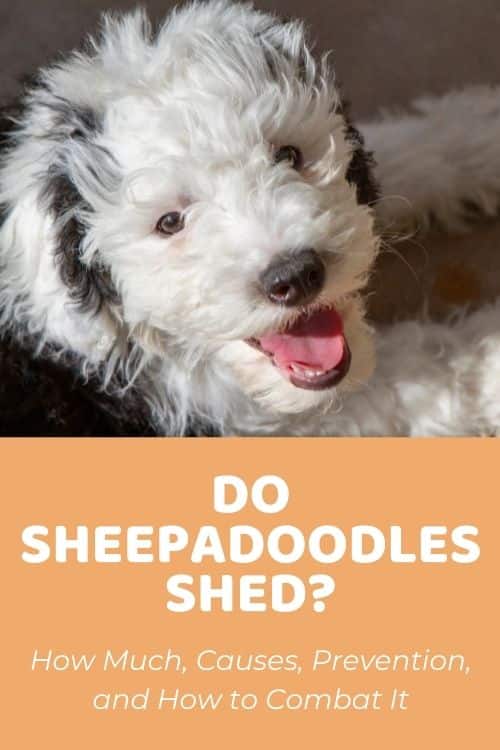

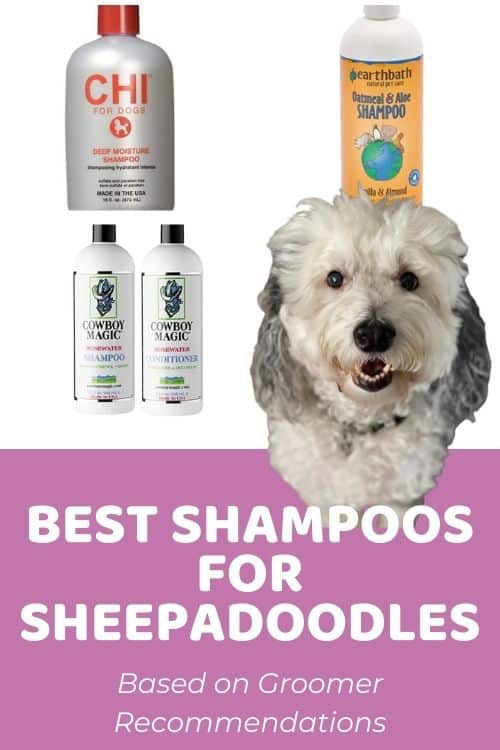
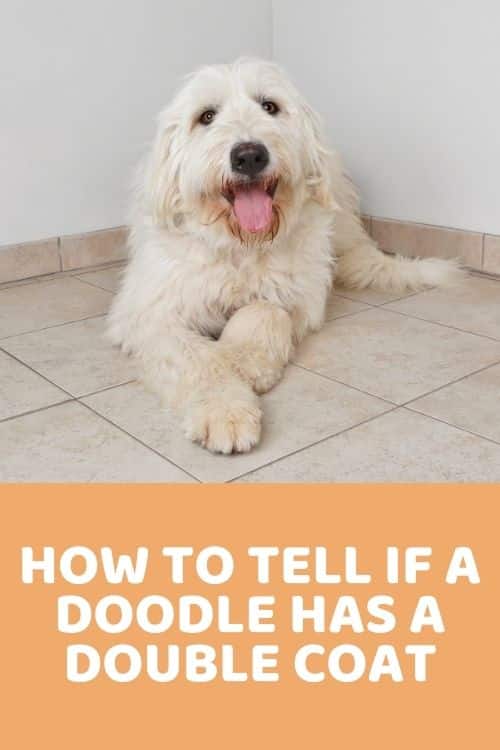

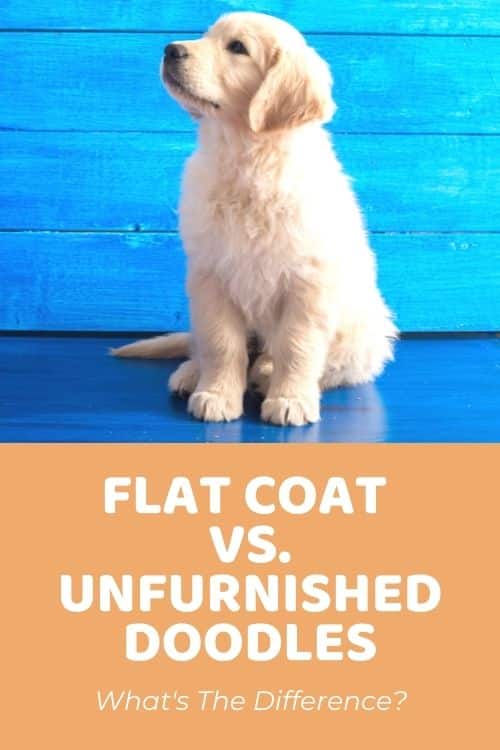
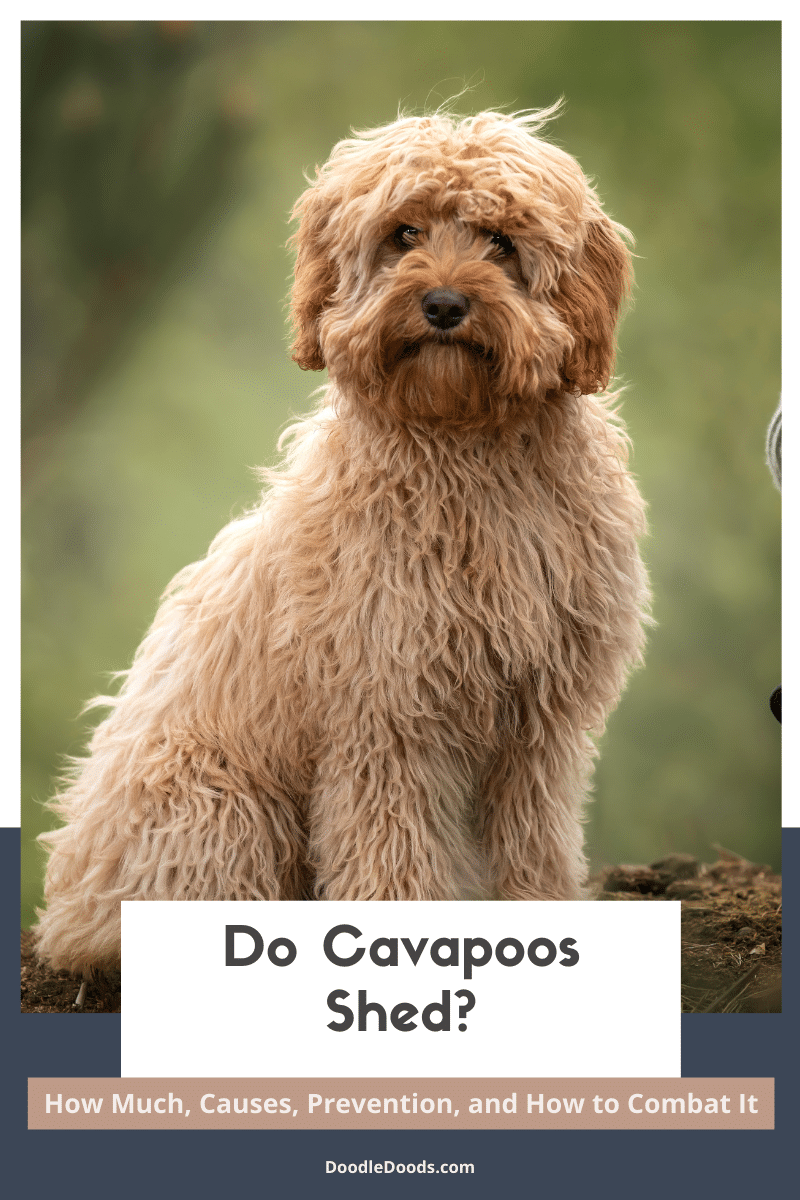
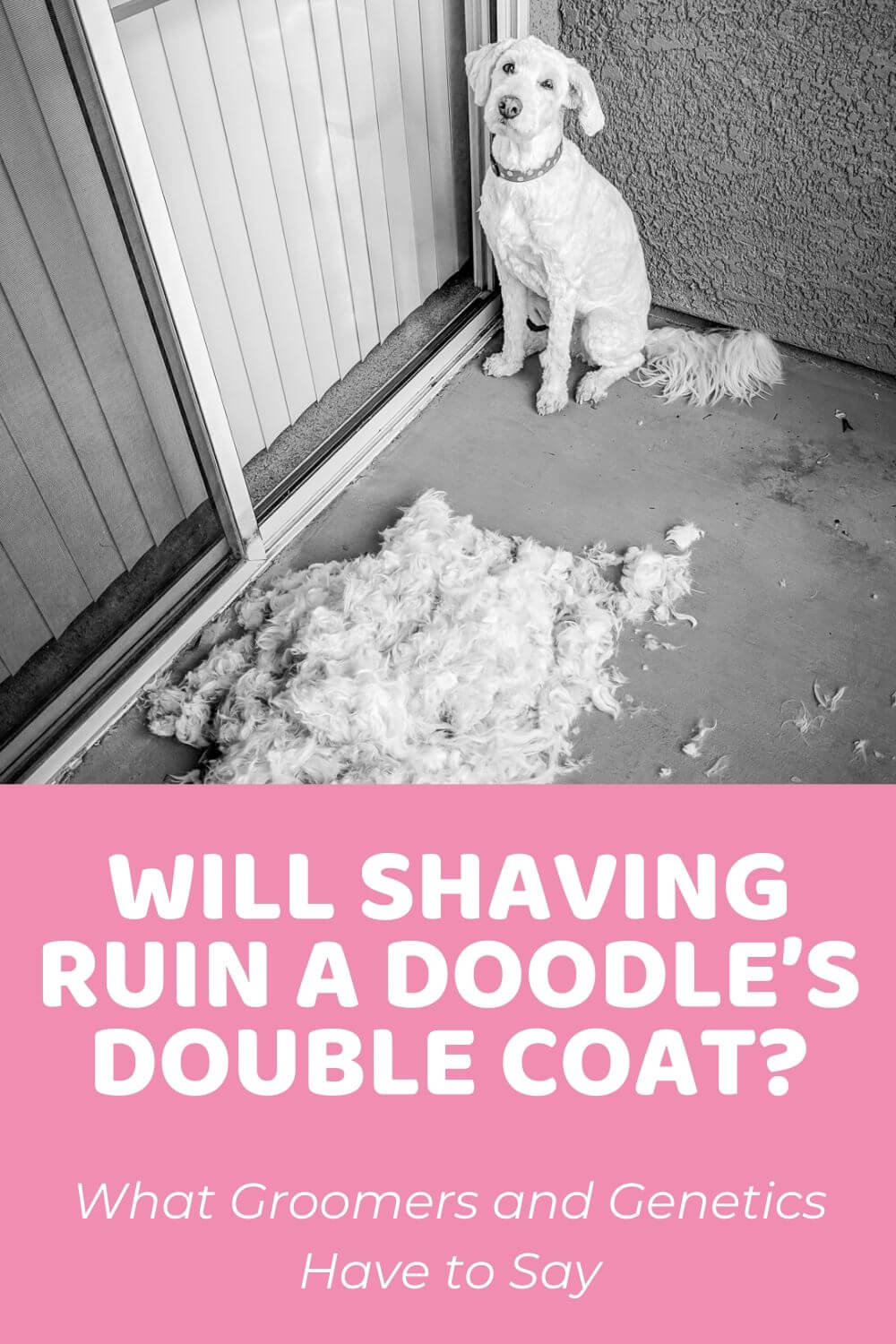

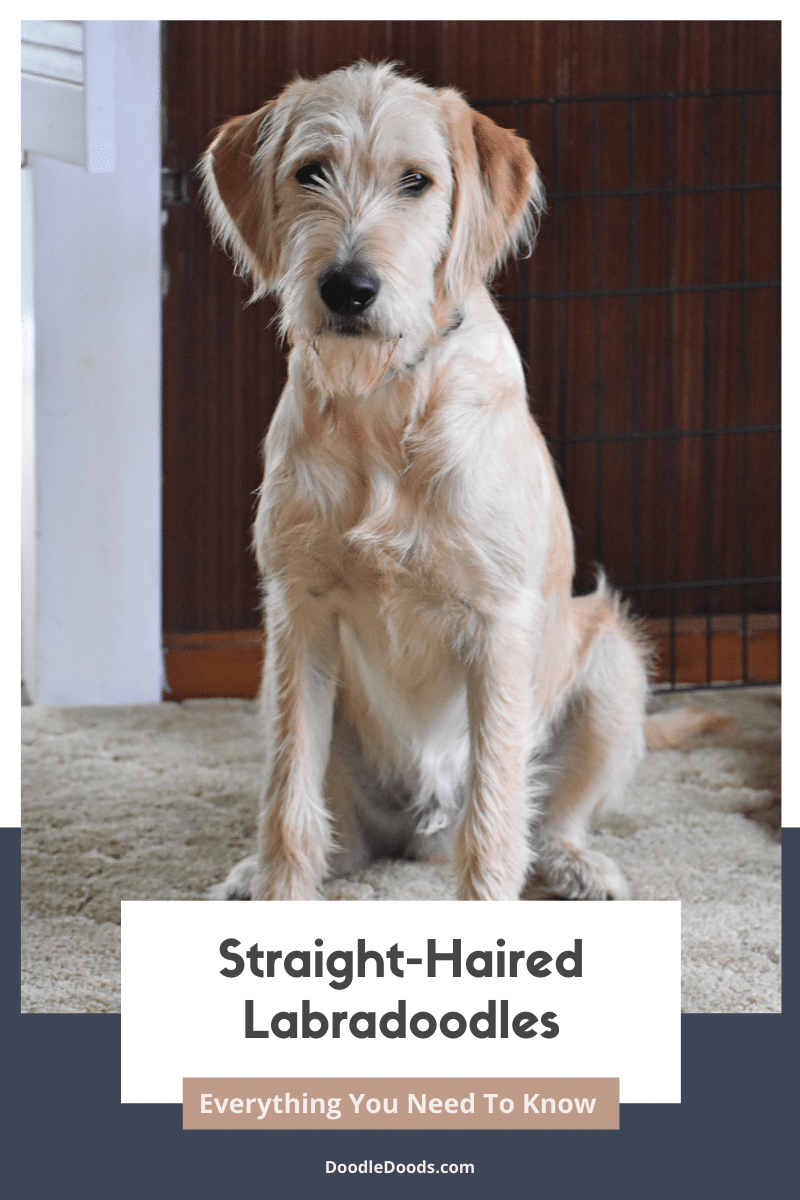

Parents of Sheepadoodles: Does your Sheepadoodle shed and how much? Let us know in the comments below!